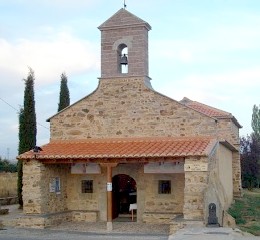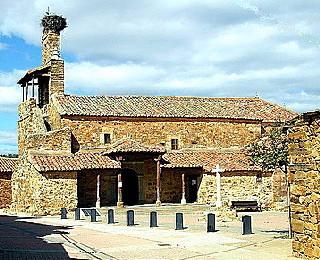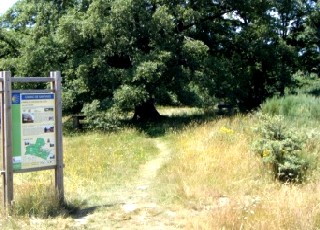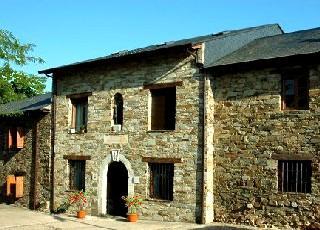Camino de Santiago - French Way - Stage 24 - Astorga to Rabanal del Camino
Total distance: 20.7 km
The next section of the Camino de Santiago goes all the way through to Ponferrada, passing through the area known as la Margateria and then enters the Bierzo region, with its mines, bordering Galicia. This area has very few villages so we would recommend that you always have enough food and water with you for emergencies. As you will be walking through some pretty high mountains make sure you take some warm clothing with you, you will need it, even in the height of summer.

Follow the Camino markers through Astorga past the cathedral, taking a left onto the Calle Portería and out through the Puerta Obispo. Take a right into Calle Sancti Spiritu and down Calle San Pedro passing a church. At a crossroads cross over to the Calle de los Mártires towards Santa Colomba de Somoza. You will know if you are going the right way as the Ermita del Ecce Homo will be on your left.
This path runs parallel with the road and after about 5 kilometres out of Astorga you will reach Murias de Rechivaldo. Accommodation here can be found at one of the 2 Albergues or at a couple of casa rurales. There are 2 bars/restaurants if you want something to eat or drink.
Murias de Rechivaldo is a lovely village with most of the stone buildings constructed in the traditional Maragato style. Many of the buildings date from the late 19th century due to a flood destroying most of the village in September 1846. The new village was built on higher ground to avoid it being flooded again.
 The 18th century Iglesia de San Esteban has a carving of the Virgen del Pilar above the door. The Virgen is another of Spain's patron saints and el dia del Pilar (Virgin's day) is celebrated throughout Spain on the 12th October. The church also has an external staircase which leads to the bell tower which is a common feature in these parts. As is also quite common in many areas, more often than not you will find a stork's nest on the top of the bell tower.
The 18th century Iglesia de San Esteban has a carving of the Virgen del Pilar above the door. The Virgen is another of Spain's patron saints and el dia del Pilar (Virgin's day) is celebrated throughout Spain on the 12th October. The church also has an external staircase which leads to the bell tower which is a common feature in these parts. As is also quite common in many areas, more often than not you will find a stork's nest on the top of the bell tower.
Walk past the albergue and the pilgrim fountain onto a track leading to a country road which runs parallel to the main road. After about 5 kilometres you enter Santa Catalina de Somoza where accommodation can be found either in one of the 2 private Albergues or at the municipal hostel.
Walk down the Calle Real and rejoin the main road at the large cross situated near some seats. In a little while the path starts to climb again. Keep along this track for 4 kilometres until you reach El Ganso which is about 1,020 metres above sea level.
El Ganso is typical of the villages in this region and some of the buildings still have the traditional thatched roofs, unfortunately many of these are being replaced with much easier to maintain roof tiles. Back in the 12th century the village had a monastery and pilgrims hospital which administered to the pilgrims passing through but there are no sign of any remains.

The Camino continues through El Ganso down a track running parallel to the road. Here it passes an old oak tree where many a pilgrim have rested in the shade of its canopy. It is known as el Roble del Peregrino.
As you walk along the path towards Rabanal del Camino you will pass the remains of the Roman gold mines of La Fucarona, one of many such mines in this region.
After about 7 kilometres you reach the small village of Rabanal del Camino. Just as you enter the village you pass the 18th century Ermita del Bendito Cristo de la Vera Cruz. This village is indelibly linked with the Camino de Santiago due in part to its location on the pass through the mountains.

In the Middle Ages this was an important stop for pilgrims before they walked through the mountains and the village was much bigger as can be seen by the number of churches here. There is a new order of Benedictine monks living in the Monasterio de San Salvador del Monte Irago. The monastery was started in 2001 by monks who came from Santo Domingo de Silos near Burgos but now the monastery is affiliated with the abbey at St Otilien in Germany. They, like their 12th century predecessors administer to the spiritual needs of the pilgrims.
Despite its size Rabanal del Camino can offer the pilgrim accommodation in 3 Albergues and 3 hostals. Take the opportunity to rest here before you tackle the mountains of Monte Irago and Montes de León.

